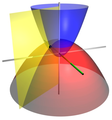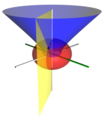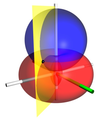Wikipedia:Valued picture candidates/July-2009
| Valued Picture Tools |
|---|
Please cut and paste new entries to the bottom of this page, creating a new monthly archive (by closing date) when necessary.
- For promoted entries, add {{VPCresult|Promoted|File:FILENAME.JPG}} to the bottom of the entry, replacing FILENAME.JPG with the file that was promoted.
- For entries not promoted, add {{VPCresult|Not promoted| }} to the bottom of the entry.
- Do NOT put any other information inside the template. It should be copied and pasted exactly, and only the first one should have FILENAME.JPG replaced with the actual filename.
| Archives | |
| 2009: | January - February - March - April - May - June - July - August - September - October - November - December |
| 2010: | January - February - March - April - May - June - July - August - September - October - November - December |

- Reason
- Good EV. Been in the article for more than 6 months
- Articles this image appears in
- excretion
- Creator
- Muhammad Mahdi Karim
- Support as nominator --Muhammad(talk) 14:44, 22 June 2009 (UTC)
- Support. There should be a warning sign for that image of the cow in excretion. --candle•wicke 01:55, 24 June 2009 (UTC)
- Support. An interesting image that taught me something. Valuable and well-used, even if not very prominent.--ragesoss (talk) 22:45, 29 June 2009 (UTC)
Not promoted No quorum. --wadester16 ![]() 19:03, 2 July 2009 (UTC)
19:03, 2 July 2009 (UTC)

- Reason
- It is among Wikipedia's most educational and free work as it demonstrates a biological entity engaging in a common natural process. It has the caption: "A bovine excreting waste from its body" which sums it up perfectly. It was added to the article on 12 October 2008 and I don't think it would succeed at FPC (although you're welcome to disagree of course). It therefore seems to pass all the criteria to be worth a nomination as a VPC.
- Articles this image appears in
- excretion
- Creator
- Makro Freak (Richard Bartz, Munich)
- Support as nominator --candle•wicke 02:10, 24 June 2009 (UTC)
- Support Disgusting, but educational.--Pericles of AthensTalk 13:27, 26 June 2009 (UTC)
- Support - Per above. - Damërung ...ÏìíÏ..._Ξ_ . -- 02:58, 29 June 2009 (UTC)
Not promoted No quorum. --wadester16 ![]() 19:03, 2 July 2009 (UTC)
19:03, 2 July 2009 (UTC)

- Reason
- The Pagoda of Fogong Temple, built in 1056 AD in Ying County, Shanxi province, China during the Liao Dynasty; although by far not China's oldest Buddhist pagoda (the oldest known ones are made of either brick or stone), it is nonetheless China's oldest surviving fully-wooden pagoda (all previous fully-wooden pagodas have been lost due to natural decay and people setting fires). This iconic image failed its featured picture candidacy over some arbitrary concern about rotating the image slightly by a percent of a degree (???). As far as I know, it violates no VP criteria and is an exceptionally illustrative picture for its topic.
- Articles this image appears in
- 11th century, Liao Dynasty, Pagoda, Chinese architecture, Chinese pagoda, 1050s in architecture, Architecture of the Song Dynasty, Pagoda of Fogong Temple, Khitan people
- Creator
- Gisling
- Support as nominator --Pericles of AthensTalk 13:24, 26 June 2009 (UTC)
- Support perhaps a touch oversaturated but fine for me. Noodle snacks (talk) 11:47, 28 June 2009 (UTC)
- Support ZooFari 17:56, 29 June 2009 (UTC)
- Support. --ragesoss (talk) 22:41, 29 June 2009 (UTC)
Promoted File:The Fugong Temple Wooden Pagoda.jpg --wadester16 17:08, 8 July 2009 (UTC)

- Reason
- Best image available of the subject. The vapour around the coolant makes it clear that low temperatures are required for known superconducting materials.
- Articles this image appears in
- Physics, Science, Superconductivity, Meissner effect, Levitation, Non-stoichiometric compound
- Creator
- Mai-Linh Doan
- Support as nominator --Noodle snacks (talk) 11:45, 28 June 2009 (UTC)
- Support - Excellent EV, and very illustrative of the subject. - Damërung ...ÏìíÏ..._Ξ_ . -- 02:58, 29 June 2009 (UTC)
- Support ZooFari 17:55, 29 June 2009 (UTC)
- Support - This is a case where a picture really IS worth a thousand words. --RabidDeity (talk) 23:18, 29 June 2009 (UTC)
- Support - agree with all the above. --candle•wicke 00:45, 2 July 2009 (UTC)
Promoted File:Meissner effect p1390048.jpg --wadester16 17:09, 8 July 2009 (UTC)

- Reason
- I've found it useful in the past.
- Articles this image appears in
- Atomic orbital, Chemistry, Electron configuration, Pi bond, Sigma bond, Aufbau principle
- Creator
- Patricia.fidi
- Support as nominator --Noodle snacks (talk) 11:52, 28 June 2009 (UTC)
- Oppose Oh, I hate to oppose such educational image, but I just did a quick SVG check and it appears that the elements are badly done (I assume they were autotraced from a bitmap instead of manually). Made up of unnecessary layers, so I've tagged the graphic for cleanup. ZooFari 17:19, 29 June 2009 (UTC)
Not promoted --wadester16 17:09, 8 July 2009 (UTC)

- Reason
- unique, horrifying
- Articles this image appears in
- Kowloon Walled City
- Creator
- Jidanni
- Support as nominator --Jidanni (talk) 23:07, 29 June 2009 (UTC)
- Neutral. It's a great composition and a really interesting subject, but the limited amount of detail and the washed-out appearance keep me from supporting, as those factors significantly limit its encyclopedic value.--ragesoss (talk) 15:22, 3 July 2009 (UTC)
- Actually looking at File:Aerial view of Kowloon Walled City in Hong Kong on 1989-03-27.jpg you'll see it used to be more washed out. Anyway, I thought factors like those were for the other contest. Jidanni (talk) 01:28, 4 July 2009 (UTC)
- Certainly, valued pictures don't require the same level of technical quality as featured pictures, but when technical quality is low enough that it begins to interfere with encyclopedic value, then it does become a factor. That's my opinion here, that the image quality is low enough that it compromises the encyclopedic value.--ragesoss (talk) 02:06, 4 July 2009 (UTC)
- OK, next time I'll remember to open the airplane window, and use a digital camera, 20 years ago. :-) Jidanni (talk) 23:26, 4 July 2009 (UTC)
- Oppose I'd support it if it weren't for this picture: File:Aereakowloon.jpg -- H005 (talk) 20:34, 7 July 2009 (UTC)
- Weak support I agree with H005, File:Aereakowloon.jpg is superior. But this has good EV.—Chris! ct 05:48, 8 July 2009 (UTC)
Not promoted --wadester16 17:09, 8 July 2009 (UTC)

- Reason
- Though low in quality, this is amazingly encyclopedic for the two articles it accompanies. Three months ago, I (with tons and tons of support from others!) brought the article Nevado del Ruiz to FA level. I've meant to nominate this but have been consumed with other petty tasks.
- Articles this image appears in
- Nevado del Ruiz, Lahar
- Creator
- Jeffrey Marso (USGS)
- Support as nominator --ceranthor 13:35, 30 June 2009 (UTC)
- Support, good example of a lahar. --candle•wicke 00:43, 2 July 2009 (UTC)
- Support Noodle snacks (talk) 12:46, 2 July 2009 (UTC)
- Support.--ragesoss (talk) 15:23, 3 July 2009 (UTC)
Promoted File:Armero aftermath Marso.jpg --wadester16 17:09, 8 July 2009 (UTC)

- Reason
- Detailed map of tectonic plate boundaries. Also has rather randomly placed velocity vectors (presumably where measurements have been made). Based on an academically sourced map.
- Articles this image appears in
- Plate tectonics, plus many at File:Tectonic_plates_boundaries_detailed-en.svg#File links
- Creator
- Sting
- Support as nominator --Noodle snacks (talk) 23:37, 8 July 2009 (UTC)
- Just curious, what puts you off nomming at FPC? Size looks OK, sourcing looks OK... --jjron (talk) 14:24, 9 July 2009 (UTC)
- Nothing really, sounds like a plan if the issues below can be fixed. Noodle snacks (talk) 10:52, 13 July 2009 (UTC)
- Comment I might have to think about this one. It uses appropriate fonts, but I don't like the white text with black borders. It makes it harder to read from a wide view like this. Some parts of the lines are incomplete, so I ask why. The lines switch from one color to another periodically and I question its accuracy (the lines don't connect, just overlap each other). The lines upclose don't concern me, as zooming in close obviously gets even more inaccurate, but I only want to know if the incomplete lines were done on purpose. It also has a minor compression issue with a text element, as seen in the legend as a thumbnail (It is a 30). Also, is there an ocean I'm not aware of? There are some chances I can fix it, but I need some input first. ZooFari 02:20, 10 July 2009 (UTC)
- Do you refer to the Austral Ocean? Hmmm, Southern Ocean doesn't even mention that as a possible synonymous term. --jjron (talk) 07:35, 15 July 2009 (UTC)
- Yep, I've never heard of it. Would a change to "Southern ocean" be okay? ZooFari 17:16, 16 July 2009 (UTC)
- "Austral" does mean southern, but I've never heard it being called that. Is anyone interested in cleaning this up then nomming for FPC?
- Yep, I've never heard of it. Would a change to "Southern ocean" be okay? ZooFari 17:16, 16 July 2009 (UTC)
- Do you refer to the Austral Ocean? Hmmm, Southern Ocean doesn't even mention that as a possible synonymous term. --jjron (talk) 07:35, 15 July 2009 (UTC)
- Comment Solid piece of work. A useful and attractive condensation of the Bird/UCLA dataset. Thanks Sting, and second the nomination. --Sargon3 (talk) 16:38, 10 July 2009 (UTC)
Not promoted No quorum. --wadester16 06:50, 22 July 2009 (UTC)

- Reason
- Best (resolution, freeness, size, everyday subject) illustration on Schlieren photography, but not the best I've ever seen.
- Articles this image appears in
- Schlieren photography, Schlieren
- Creator
- Settles1
- Support as nominator --Noodle snacks (talk) 10:43, 13 July 2009 (UTC)
Not promoted No quorum. --wadester16 04:41, 25 July 2009 (UTC)
- Reason
- Nominating as a set for various coordinate systems. Could narrow this down to the first three (which are the most common in practical use) if need be as I don't think Oblate spheroidal coordinates are particularly common beyond mathematical interest.
- Articles this image appears in
- Generally the relevant article for a given system (eg Spherical coordinates)
- Creator
- WillowW
- Support as nominator --Noodle snacks (talk) 10:45, 13 July 2009 (UTC)
- Oppose. Confusing. I can't make much sense of these diagrams, even though I know what (spherical|cartesian|cylindrical) coordinates are. MER-C 10:54, 19 July 2009 (UTC)
- From an article caption: The coordinate surfaces of the spherical coordinates (r, θ, φ). The red sphere shows the points with r=2, the blue cone shows the points with θ=45°, and the yellow half-plane shows the points with φ=−60°. The z-axis is vertical and the x-axis is highlighted in green. The three surfaces intersect at the point P with those coordinates (shown as a black sphere); the Cartesian coordinates of P are roughly (0.707, −1.225, 1.414). So in each case the point is given by the intersection of the surfaces. Noodle snacks (talk) 05:57, 20 July 2009 (UTC)
- Yes, I know that. What I meant was the design is confusing, something like File:Coord system SE 0.svg is a lot cleaner. MER-C 09:06, 20 July 2009 (UTC)
- Support - Great 3-D pictures, and good detail. - ☩Damërung ☩. -- 02:23, 20 July 2009 (UTC)
- Oppose This could be an easy SVG target, and can be vectorized to much cleaner versions as MER-C mentioned. Maybe request at GL; I'm already busy with several vectorizations. ZooFari 15:19, 20 July 2009 (UTC)
Not promoted --wadester16 04:42, 25 July 2009 (UTC)

- Reason
- Interesting experiment and good illustration
- Articles this image appears in
- Bitumen, Pitch drop experiment, Viscosity, Pitch (resin)
- Creator
- Noodle snacks
- Support as nominator --Noodle snacks (talk) 09:27, 14 July 2009 (UTC)
- Support --candle•wicke 15:14, 15 July 2009 (UTC)
- Support although it can use a more descriptive caption. ZooFari 17:10, 16 July 2009 (UTC)
- Support. --ragesoss (talk) 00:50, 20 July 2009 (UTC)
Promoted File:University_of_Queensland_Pitch_drop_experiment-white_bg.jpg --wadester16 04:42, 25 July 2009 (UTC)
| Archives | |
| 2009: | January - February - March - April - May - June - July - August - September - October - November - December |
| 2010: | January - February - March - April - May - June - July - August - September - October - November - December |











